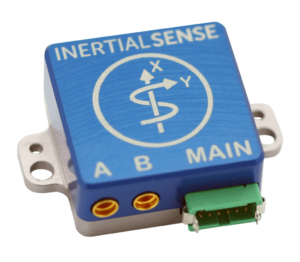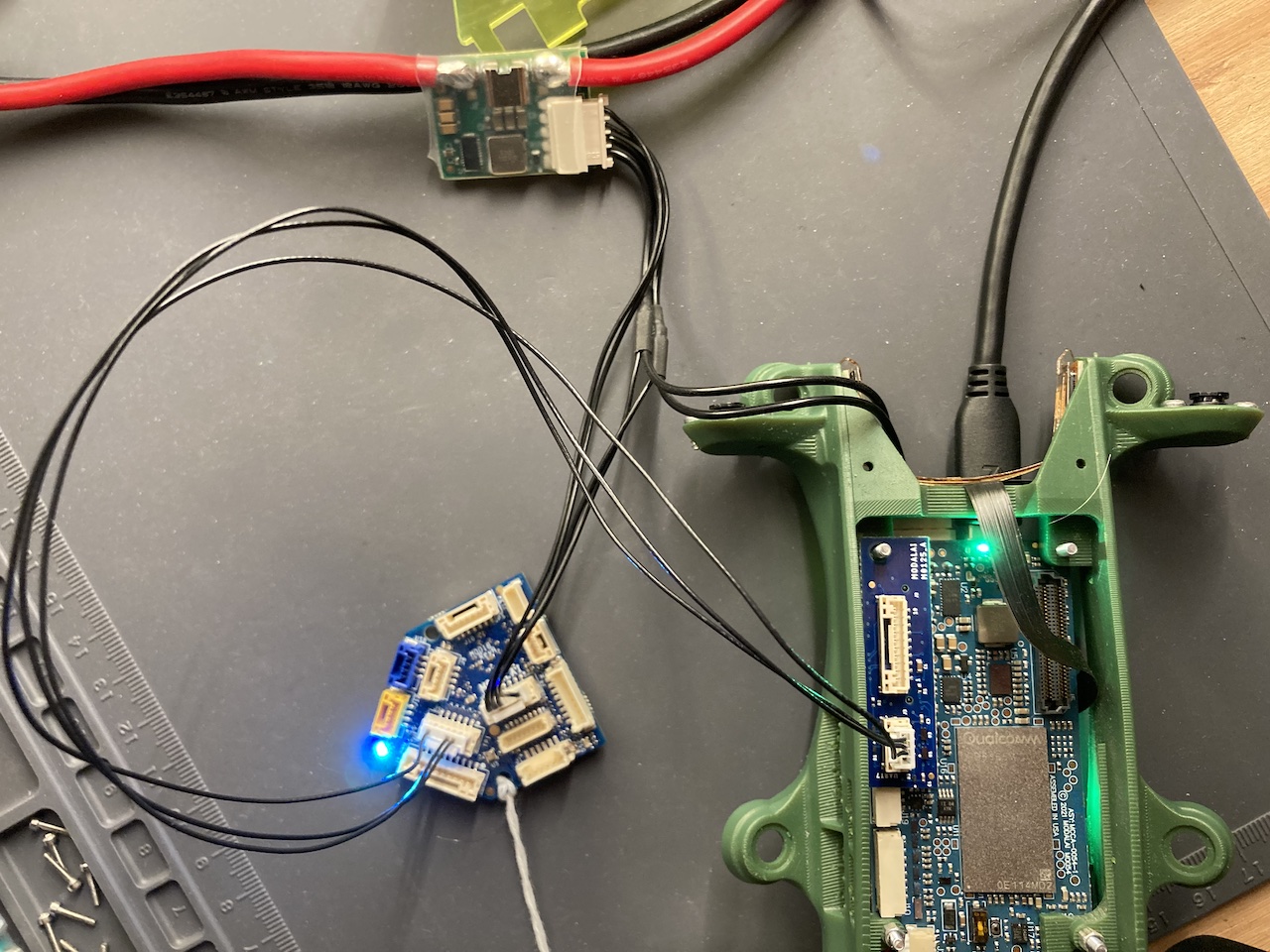SparkNavi Drone Flight Controller and GNSS/INS Made in Taiwan: Technology for Expert UAVs
SparkNavi Drone Flight Controller and GNSS/INS Made in Taiwan: Technology for Expert UAVs
Blog Article
Discovering the Function of Drone Trip Controllers in Enhancing Trip Stability and Navigation Efficiency
The advancement of drone modern technology has actually considerably boosted the significance of flight controllers, which offer as the brain of these airborne cars. By incorporating real-time information from a range of sensors, flight controllers boost trip security and navigating performance, making certain that drones can run smoothly even in complicated environments.

Comprehending Trip Controllers
Trip controllers are integral elements in the performance of drones, functioning as the brains that handle and maintain flight operations. These advanced gadgets procedure data from various sensing units, including accelerometers, gyroscopes, and GPS, to make sure that the drone maintains its desired trip course. The flight controller interprets this data and carries out commands based on pre-defined formulas, allowing the drone to react to ecological adjustments, such as wind or barriers.
The key function of a flight controller is to keep security throughout flight. It accomplishes this by making real-time adjustments to the drone's electric motors and control surface areas, making sure equilibrium and control. Furthermore, modern-day trip controllers integrate advanced attributes such as waypoint navigation, enabling automated trip courses and boosted functional performance.
Comprehending the style of flight controllers is critical for both enthusiasts and professionals. As modern technology advancements, trip controllers have come to be a lot more portable and qualified, integrating artificial knowledge to enhance decision-making processes and adjust to complicated trip circumstances.
Trick Elements of Flight Stability
Accomplishing ideal trip security in drones relies upon numerous vital elements that work in performance to make sure smooth and controlled operations. Central to this stability is the flight controller itself, which processes data from different sensing units to preserve the desired flight mindset. This consists of accelerometers and gyroscopes that determine motion and positioning, enabling real-time changes to the drone's setting.
Another vital component is the electronic speed controllers (ESCs), which regulate the power delivered to the electric motors. By carefully tuning electric motor speeds in action to flight controller commands, ESCs help maintain balance and neutralize disturbances brought on by wind or abrupt motions.
Additionally, the design of the drone's frame plays an essential role in trip stability. A well-structured structure decreases resonances and improves the overall wind resistant account, adding to smoother flight characteristics. Ultimately, the integration of advanced algorithms within the flight controller help in predictive adjustments, guaranteeing a receptive and versatile flight experience.
With each other, these parts create a cohesive system that boosts a drone's security, permitting precise maneuvering and boosted efficiency in various trip problems.
Navigation Effectiveness Techniques
Effectiveness in navigating is essential for maximizing drone operations, specifically in intricate environments. Efficient navigation strategies boost the capability of drones to go across challenging terrains and prevent barriers, consequently boosting functional effectiveness and security.
One prominent strategy is the implementation of innovative GPS and inertial dimension devices (IMUs) that supply precise area tracking and positioning information. These technologies allow drones to compute optimum trip courses in real-time, considering various elements such as wind problems and potential challenges.
Another strategy entails the usage of algorithms for path planning and optimization. Formulas such as A * and Dijkstra's formula can be deployed to figure out the most reliable course while lessening power intake and flight time. Integrating machine discovering designs can allow drones to adaptively learn from their atmospheres, enhancing navigation abilities through experience.

Influence on Autonomous Drones
The assimilation of sophisticated navigating techniques has actually exceptionally changed the capacities of independent drones, enabling them to run with higher autonomy and precision. SparkNavi drone flight controller and GNSS/INS made in taiwan. These enhancements are primarily credited to sophisticated trip controllers that utilize real-time information handling and sensor blend, allowing drones to navigate complicated settings perfectly
The impact on independent drones expands past simple navigating; it incorporates boosted obstacle evasion, improved stability during dynamic conditions, and raised mission dependability. By leveraging algorithms that integrate maker knowing and expert system, drones can adapt to changing situations, making educated choices that optimize their trip courses while reducing risks.
In addition, the implementation of durable trip controllers has actually facilitated the execution of intricate jobs, such as aerial examinations, shipment services, and agricultural tracking, with minimal human intervention. This ability not just improves procedures yet also decreases human error, thus boosting total security.
Because of this, the functional scope of autonomous drones has broadened dramatically, making them vital devices in different industries. Their capacity to perform successfully in diverse circumstances emphasizes the important duty that advanced flight controllers play in forming the future of unmanned airborne systems.
Future Fads in Trip Control
Frequently, improvements in flight control modern technology are poised to redefine the landscape of drone procedures in the coming years. Arising trends suggest a substantial shift towards enhanced expert system (AI) integration, allowing trip controllers to refine real-time information a lot more efficiently. This evolution will certainly help with enhanced decision-making abilities, permitting drones to adapt to dynamic environmental conditions autonomously.
Moreover, the application of artificial intelligence algorithms is anticipated to boost predictive upkeep, thus lessening downtime and expanding the lifecycle of drone components. This aggressive technique to look at these guys maintenance will certainly be vital as drone applications expand throughout numerous industries, from agriculture to logistics.

.jpg)
Lastly, improvements in safe communication methods will certainly deal with security and regulative problems, guaranteeing that drones can operate perfectly in stuffed airspaces (SparkNavi drone flight controller and GNSS/INS made in taiwan). Collectively, these trends direct in the direction of a future where trip control systems are not only smarter and extra additionally qualified but efficient of operating safely in a progressively integrated airspace
Final Thought
To conclude, drone flight controllers are indispensable to enhancing trip security and navigation performance with the sophisticated processing of sensor information. By preserving optimum trip mindsets and utilizing important site innovative formulas for path optimization and challenge evasion, these controllers substantially add to the autonomy and functional safety and security of drones. As technology remains to progress, further developments in trip control systems are anticipated, assuring enhanced performance and expanded capabilities in the world of unmanned airborne cars.
By incorporating real-time information from a variety of sensing units, flight controllers boost flight security and navigation performance, making sure that drones can run efficiently also in intricate settings.Flight controllers are essential parts in the functioning of drones, offering as the minds that manage and support trip operations. Furthermore, modern flight controllers incorporate sophisticated attributes such as waypoint navigation, permitting for automated flight courses and boosted operational performance.
Central to this stability is the trip controller itself, which processes information from various sensors to keep the preferred trip attitude.In conclusion, drone trip controllers are essential to enhancing trip stability and navigation performance via the innovative handling of sensor data.
Report this page